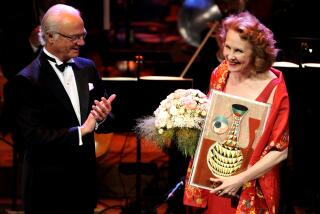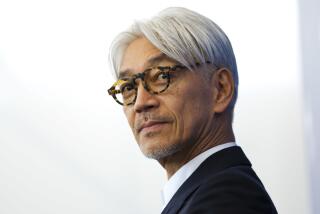Kawabata Shows His Strengths on Violin in U.S. Debut
- Share via
Innate elegance and suave instrumental control carried violinist Narimichi Kawabata through his daunting U.S. debut, Sunday afternoon at the Japan America Theatre. His familiar program gave him plenty of opportunity for technical display, but the 28-year-old violinist made his strongest impression in gentle, rapt lyric flights.
Kawabata, who began losing most of his vision as a child and now learns everything by ear, has the smoothest of bow changes. He spun out the opening Larghetto of Tartini’s “Devil’s Trill” Sonata as a single long-spanned arch, throbbing with steady vibrato. He made the central variations of Beethoven’s “Kreisler” Sonata a set of vastly affecting miniatures, each warm and gracious.
He also missed much of the weirdness and bite of the Tartini, however, and the logical strength of the Beethoven. Kawabata does not seem as interested in period or individual style as he does in exposing a singing line in an overarching melodic statement.
Much more convincing was his second half, with its short tuneful hits by Faure and Tchaikovsky, its athletically contorted solo etude by Heinrich Ernst and Ravel’s fiery “Tzigane.” Though never passing beyond a certain reserve, Kawabata dug deeply here, confident in exposition and detail.
In all he had the articulate support of South African pianist Daniel-Ben Pienaar, his recital partner since they met at the Royal Academy of Music in London in 1996. Pienaar played with nimble, pertinent grace, and perhaps a bit too much accommodation in the Beethoven.
The large and enthusiastic crowd kept the duo coming back for four encores, including an Albeniz Tango that elicited Kawabata’s most sensuous playing, and culminating in the Bach-Gounod “Ave Maria” as sweet and serene as possible.
More to Read
The biggest entertainment stories
Get our big stories about Hollywood, film, television, music, arts, culture and more right in your inbox as soon as they publish.
You may occasionally receive promotional content from the Los Angeles Times.










